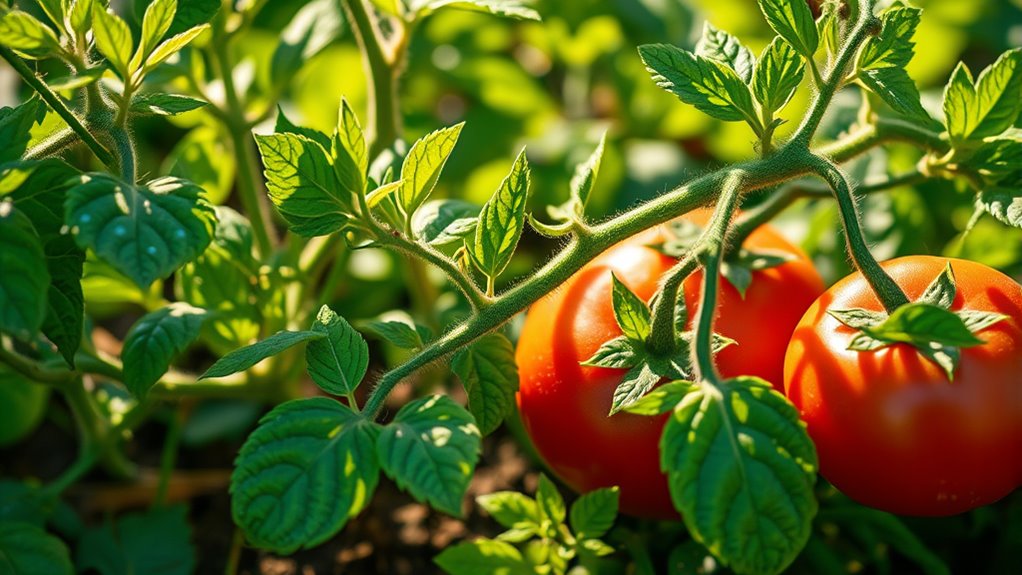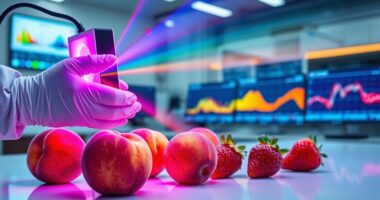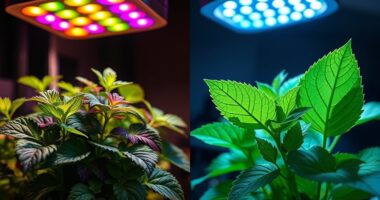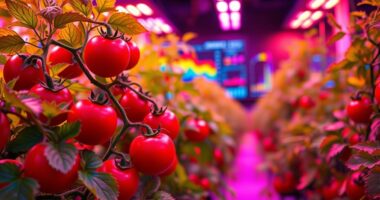Quantum dots in horticulture can boost crop yields by enhancing nutrient delivery and improving photosynthesis efficiency. They act as light-harvesting agents, capturing broad-spectrum light and re-emitting it at ideal wavelengths for plant use. This can lead to healthier, faster-growing plants with higher biomass and better resilience to stresses. If you want to discover how these tiny particles might revolutionize agriculture and maximize your harvests, there’s more to explore beyond this overview.
Key Takeaways
- Quantum dots can enhance photosynthesis by acting as light-harvesting agents, increasing plant energy efficiency.
- They enable targeted delivery of nutrients and growth regulators, promoting healthier plant development.
- Quantum dots’ optical properties can extend usable light spectra, potentially boosting crop yields.
- Their use reduces chemical runoff and improves resource utilization, leading to more sustainable productivity.
- Overall, quantum dots have the potential to increase crop yields by improving growth conditions and photosynthetic efficiency.
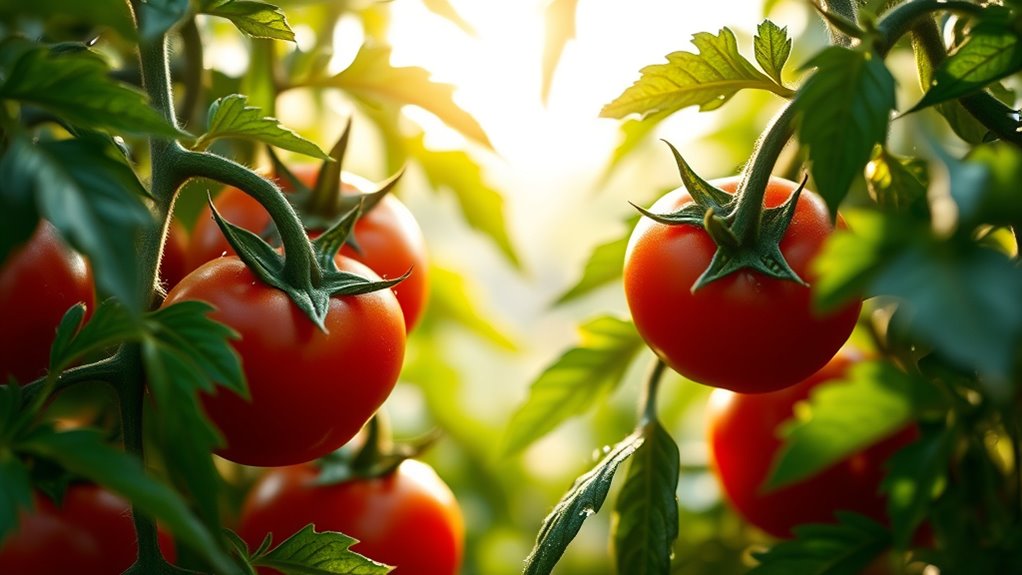
Have you ever wondered how cutting-edge nanotechnology could transform plant growth? One promising area is the use of quantum dots, tiny semiconductor particles that can be engineered to interact uniquely with plant systems. When applied thoughtfully, quantum dots can serve as carriers for nanoparticle delivery, allowing nutrients, fertilizers, or growth regulators to reach specific plant tissues more efficiently. This targeted approach minimizes waste and maximizes effectiveness, which could revolutionize how we support healthy plant development. *furthermore*, quantum dots possess unique optical properties that can be exploited to enhance photosynthesis, the fundamental process by which plants convert light into energy. By integrating quantum dots into plant systems, scientists aim to improve light absorption, especially under suboptimal conditions, leading to more efficient photosynthesis enhancement. Additionally, research indicates that nanotechnology can help in developing crops with increased resistance to environmental stresses, further supporting sustainable agriculture.
In practice, nanoparticle delivery via quantum dots involves administering these particles in a way that they penetrate plant cell walls and membranes without causing harm. Once inside, they can release their cargo directly where it’s needed, such as in chloroplasts or vascular tissues. This precise delivery not only boosts nutrient uptake but also reduces the amount of chemicals released into the environment. The ability to control the release of nutrients or growth stimulants at a cellular level means plants can grow faster, healthier, and with less input. This targeted approach can be particularly advantageous in challenging growing conditions or with crops that require precise management.
On the other hand, quantum dots can also directly influence photosynthesis by acting as light-harvesting agents. Their unique ability to absorb light across a broad spectrum and re-emit it at specific wavelengths can be harnessed to optimize light absorption in plant leaves. When incorporated into the plant’s environment or even within the plant tissue, quantum dots can effectively extend the range of usable light, making photosynthesis more efficient. This could result in increased biomass, higher yields, and improved resilience to environmental stressors. Such enhancements are especially relevant as global agriculture faces the challenges of climate change and the need for sustainable food production.
Frequently Asked Questions
Are Quantum Dots Environmentally Safe for Long-Term Use?
You might wonder if quantum dots are environmentally safe for long-term use. While they offer promising benefits, you should consider their environmental impact and long-term safety. Current research suggests that, when properly managed, quantum dots pose minimal risks, but ongoing studies are essential to confirm their safety over time. It’s wise to stay informed about new findings to guarantee their use remains environmentally responsible and safe for the future.
How Cost-Effective Are Quantum Dots Compared to Traditional Fertilizers?
You might wonder how cost-effective quantum dots are compared to traditional fertilizers. The cost comparison shows that quantum dots are generally more expensive upfront, but they can improve fertilizer efficiency by delivering nutrients more precisely. Over time, this increased efficiency could reduce overall fertilizer use and costs. While initial investments are higher, the potential for better crop yields and less waste makes quantum dots a promising, cost-effective alternative for sustainable horticulture.
Can Quantum Dots Be Used on All Types of Plants?
You wonder if quantum dots can be used on all plants. While they can enhance nutrient delivery via plant absorption pathways, nanoparticle toxicity varies among species. Some plants absorb quantum dots efficiently, but others might be sensitive, risking damage or toxicity. It’s crucial to evaluate each plant’s unique characteristics and potential toxicity risks before applying quantum dots widely, as their effectiveness and safety aren’t universal across all plant types.
What Are the Potential Health Risks to Consumers?
Let’s face it, concerns about food safety are at the forefront when considering quantum dots in horticulture. You might worry about consumer exposure to potential toxins or nanoparticles. While research is ongoing, it’s vital to monitor how these materials interact with plants and whether they accumulate in edible parts. Until safety is fully established, cautious use guarantees consumer health isn’t compromised and helps maintain trust in the food supply.
How Do Quantum Dots Specifically Influence Plant Growth Mechanisms?
You might wonder how quantum dots influence plant growth mechanisms. They enhance photosynthesis by improving light absorption, which boosts energy production. Additionally, quantum dots can aid in nutrient delivery, making essential minerals more available to plants. This combined effect accelerates growth and development. By optimizing these processes, quantum dots help plants grow healthier and faster, potentially leading to increased yields in horticulture.
Conclusion
Think of quantum dots as tiny stars guiding your crops to shine brighter. While research shows promise, they’re still in the early innings of transforming horticulture. You can’t expect miracles overnight, but with continued innovation, these nano-sized wonders may become the secret ingredient to boosting your yields. Keep an eye on this shining frontier—your garden’s future might just depend on these little lights illuminating new growth paths.
